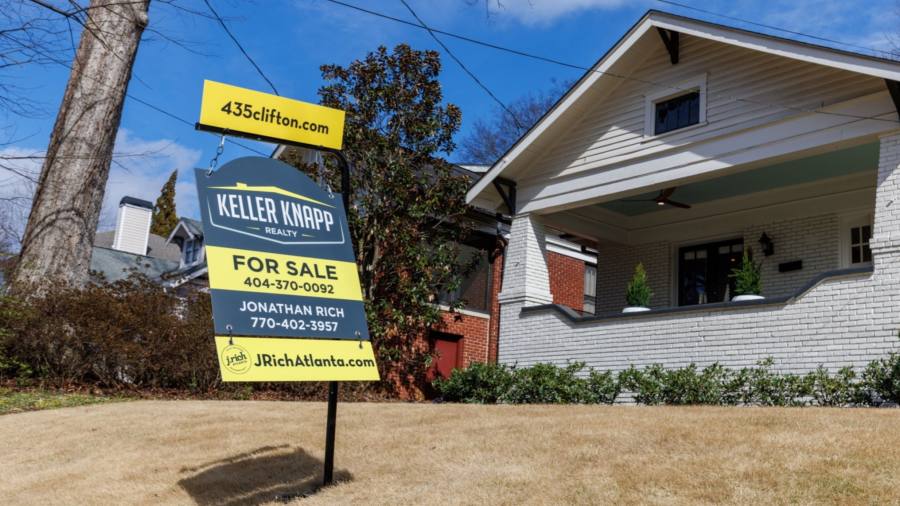Receive free Property sector updates
We’ll send you a myFT Daily Digest email rounding up the latest Property sector news every morning.
When something in the US mortgage market reaches levels not seen since the 2008 financial crisis, the alarm bells start ringing. They usually only shrill louder if it involves securitisation — the use of which for subprime loans triggered the turmoil 15 years ago.
But home-equity loans are making a gradual comeback, and bankers are excited. They’re confident, too, that this — so far — is no rerun of the pre-2008 boom.
Such loans allow homeowners to borrow money using the equity in their houses as collateral. Before the financial crisis, they were used in so-called “piggyback” loans. When borrowers were short of a downpayment and were keen to cut the cost of mortgage insurance, they sometimes took out, say, a 90 per cent mortgage and borrowed the rest via a home-equity loan. That left homeowners and ultimately their lenders horribly exposed when house prices fell.
They are now rising in demand as housing market activity has slumped in the US over the past year. Interest rates have soared, but prices have stayed high because demand is outstripping the small supply of homes on the market. There are so few homes for sale because the US practice of taking 30-year fixed-rate mortgages means that three-quarters of all homeowners hold mortgages charging 4 per cent or less, according to JPMorgan research. With new loans averaging 6.93 per cent last week, few homeowners are keen to pay up to finance a move.
As a result, they’re eyeing other ways of tapping the equity in their homes.
“With most borrowers locked in, if they want to extract cash they can’t do that without a Heloc [home equity line of credit] or a second lien mortgage,” says Pratik Gupta, strategist with Bank of America, which reckons up to $60bn of 2nd lien loans will be made this year with a further $50bn in helocs.
Second liens rank junior to a first loan. Helocs operate more like a credit card, allowing borrowers to draw funds on demand, within a limit.
Balances on Helocs nudged up by $3bn to $339bn in the first quarter of this year, according to data from the New York Federal Reserve. That was a fourth quarter of growth, breaking a 13-year downtrend.
Both forms cost more than standard first mortgages. But according to BofA’s calculations, most homeowners seeking funds would still face lower monthly bills if they cashed in some of their equity this way instead of refinancing their whole mortgage at current rates.
What has bankers excited isn’t just the lending opportunity but the need to find a way to finance further loan growth. Regulators’ post-2008 capital requirements make home equity loans, particularly ones structured as a line of credit, expensive for banks to hold. Step forward securitisation — where the loans can be bundled and sold on — if a structure can be found for a market that mixes mortgages and consumer lending.
“There hasn’t been a lot of consistency, so investors have to relearn with each new deal,” said John Sim, MBS analyst at JPMorgan, who spoke about market trends but not a recent deal sold by the bank. “At a very high level we estimate there’s about $5.5tn in equity that could be extracted from the US market. Say people took out 3 to 5 per cent of that — that’s $200bn-plus in loans.”
The securitisation deals that have been done — about $3bn this year — have been on the conservative side. Late in June, Sim’s colleagues packaged $186mn in bonds securitised by Helocs. The borrowers had very high credit ratings and extended their total borrowing, relative to the value of their property, to just 73.4 per cent.
The deal sparked interest because it offered a possible way forward by backing the bonds through a master trust — a pool of loans maintained by its creator or servicer and which can be topped up as loans are paid off — rather than something more closely resembling the discrete parcels of loans that typically back US mortgage-backed securities. Fitch analyst Susan Hosterman says it was the first time she had seen the structure used for a mortgage-like product. She too anticipates a pick-up in lending. “People who were predicting recession, now maybe in 2024, are trying to get money out before prices come down,” Hosterman added.
The most widely followed national measure, the S&P Case-Shiller Index, reported prices rose in May and stand within a percentage point of their all-time peak in June 2022.
With US house prices near all-time highs, there’s a great temptation to take out cash for purposes that can range from paying for a new kitchen to shrinking credit card debt. If lending standards remain conservative and the funds are not used to gloss over affordability issues as they were before, then home equity’s return will be welcomed.
Read the full article here




